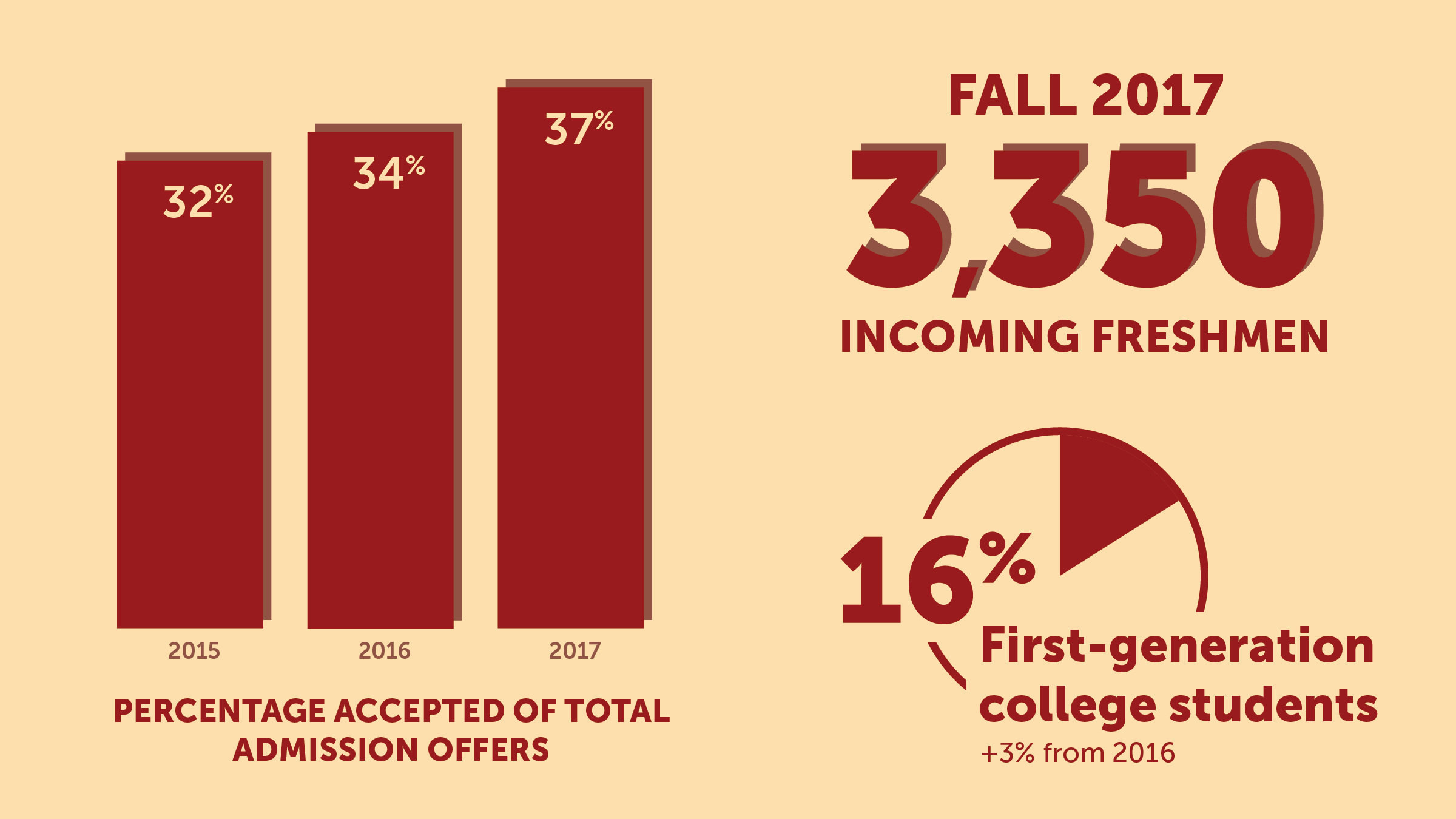Incoming freshman class largest, most diverse in history
USC will welcome 3,350 freshman students this fall, the biggest incoming freshman class in the University’s history.
Although admission offers decreased from 9,181 offers in 2015 to 8,980 offers in 2017, the number of students accepting their offer has been on the rise. 32 percent of freshman accepted their admissions offer in 2015; this number rose to 34 percent in 2016 and 36 percent in 2017 — with a total of 90 more students for this academic year compared to 2016.
In addition, USC will welcome a more diverse student body this fall — the most sizable the University has seen. International students comprise nearly a quarter of the entire undergraduate student body, and 16 percent of the incoming freshman class come from over 50 countries located outside the U.S., a 2 percent rise from students entering in 2016.
The highest numbers of incoming freshmen will be traveling from China, India, Canada, South Korea and the United Kingdom.
“Many people thought with the election year rhetoric that international enrollments would drop,” said Kirk Brennan, the associate dean of admissions. “We didn’t see that.”
This freshman class will also consist of an additional 125 minority students, a 1 percent increase from 2016. Sixteen percent of the class is first-generation students, which is a 3 percent increase from last year.
The steady increase is very much intentional. USC restructured their admitted student programs to accommodate more students and promoted the University’s commitment to financial aid.
The process was recently enhanced by federal changes, which allow students and families to consider up to two years prior income- their net price in factoring — therefore giving them more time to figure out how to make an expensive investment work, Brennan said.
Each student has different goals and reasoning in what drew them to apply and ultimately accept their offer to USC.
“They are hearing about the quality education and what the USC experience could be all about,” said Emily Sandoval, the director for residential education. “This also includes the residential experience, and the experience of being at a school with such incredible school spirit.”
But an increase in class size has advantages and drawbacks. With 3,302 freshmen applying for housing this fall — 300 more than 2016 — residential colleges have been under pressure to find additional housing to accommodate the influx of students.
Overflow into larger suites — which accommodate three beds instead of the traditional two — is likely, along with dispersing students into apartments.
“A lot of universities tend to triple the residential halls,” Sandoval said. “USC doesn’t. We do our best to find more spaces.”
The positives, however, tend to outweigh the negatives. With a larger freshman class, Sandoval said students will likely gain various perspectives in the classroom, have more peers on campus and grow assured that they will find their niche and be introduced to new interests.
“The poet has something to teach the business major, who has something to teach the Muslim and the Christian, or the Republican and the Democrat,” Brennan said. “There’s no better place to do that than at the University.”


To accommodate the increased yield in the freshman class (well done, USC!), the administration now needs to reduce the size of the transfer classes significantly, which size dilutes the quality of the student body and is unfair to those who attend for all four years.
Only Jesus saves. Wake up!